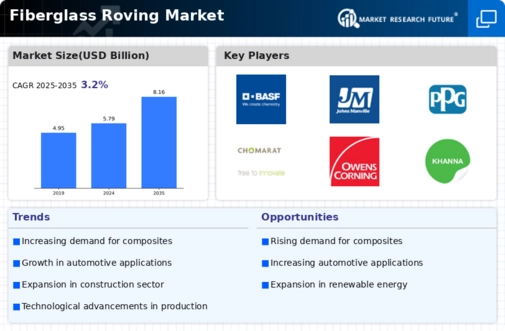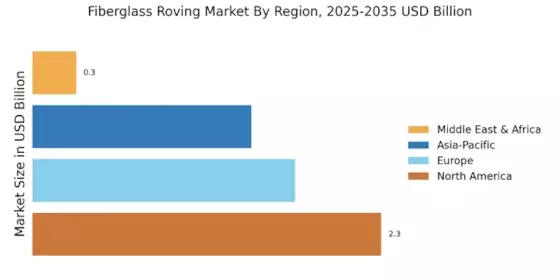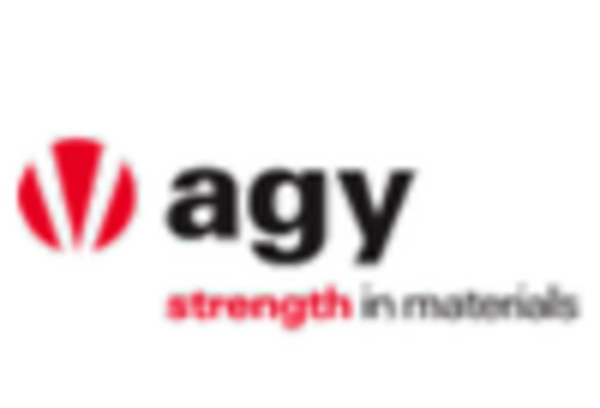Expanding Automotive Applications
The automotive industry is a key driver for the Fiberglass Roving Market, as manufacturers seek lightweight materials to improve fuel efficiency and reduce emissions. Fiberglass roving is increasingly used in the production of composite parts for vehicles, including body panels and structural components. The automotive sector is projected to grow steadily, with a focus on sustainability and performance. This shift towards lightweight materials suggests that the Fiberglass Roving Market may experience heightened demand as automakers strive to meet regulatory standards and consumer expectations for eco-friendly vehicles. Consequently, this trend could lead to increased investments in research and development within the industry.
Rising Demand in Wind Energy Sector
The Fiberglass Roving Market is significantly influenced by the growing demand for renewable energy sources, particularly in the wind energy sector. Wind turbine blades, which require lightweight yet strong materials, increasingly utilize fiberglass roving due to its excellent mechanical properties and resistance to environmental factors. The wind energy sector is expected to expand rapidly, with investments in renewable energy projected to reach trillions of dollars in the coming years. This trend indicates that the Fiberglass Roving Market could see substantial growth as manufacturers align their production capabilities to cater to the specific needs of the wind energy sector, thereby enhancing their market presence.
Increasing Demand in Construction Sector
The Fiberglass Roving Market is experiencing a notable surge in demand driven by the construction sector. As infrastructure projects expand, the need for durable and lightweight materials becomes paramount. Fiberglass roving, known for its high tensile strength and resistance to corrosion, is increasingly utilized in the production of composite materials for construction applications. Reports indicate that the construction industry is projected to grow at a compound annual growth rate of approximately 5% over the next few years, further propelling the demand for fiberglass roving. This trend suggests that manufacturers in the Fiberglass Roving Market may need to scale production to meet the rising needs of builders and contractors, who are seeking materials that enhance structural integrity while reducing overall weight.
Advancements in Manufacturing Technologies
Technological innovations are playing a crucial role in shaping the Fiberglass Roving Market. Recent advancements in manufacturing processes, such as automated production lines and improved resin formulations, have enhanced the efficiency and quality of fiberglass roving. These technologies not only reduce production costs but also improve the performance characteristics of the final products. For instance, the introduction of high-performance fiberglass roving has led to better mechanical properties, making it suitable for a wider range of applications. As manufacturers adopt these advanced technologies, the Fiberglass Roving Market is likely to witness increased competitiveness and product differentiation, which could attract new customers and applications.
Growing Awareness of Environmental Benefits
There is a rising awareness regarding the environmental benefits associated with fiberglass roving, which is positively impacting the Fiberglass Roving Market. As industries seek to adopt more sustainable practices, the use of fiberglass roving, which is recyclable and has a lower environmental footprint compared to traditional materials, is gaining traction. This shift is particularly evident in sectors such as construction and automotive, where companies are increasingly prioritizing eco-friendly materials. The growing emphasis on sustainability is likely to drive innovation within the Fiberglass Roving Market, as manufacturers explore new formulations and applications that align with environmental goals, potentially leading to a more sustainable future.


















Leave a Comment